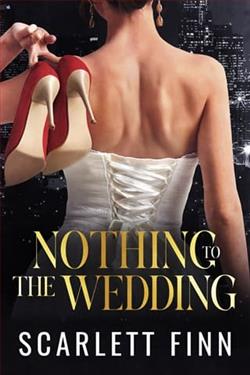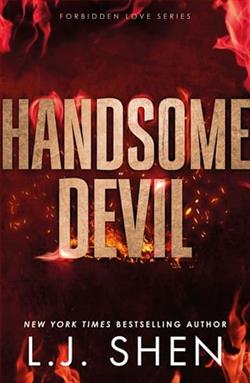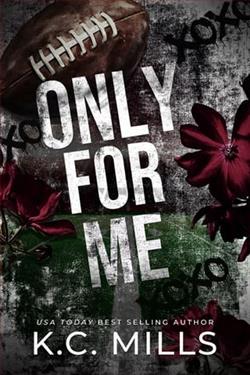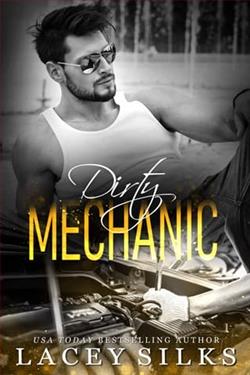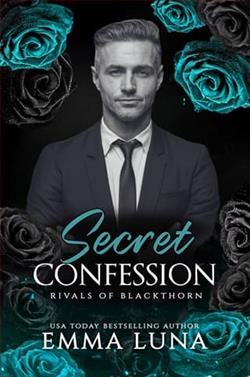Page 45 of French Kiss
18
Love in Marble
July11
Paris
It was only a few minutes’walk to the Rodin Museum, which hid behind tall gates in the seventh arrondissement. Across the street, a couple of police officers stood guard outside a building. The grounds consisted of crushed gravel paths leading past manicured hedges in conical shapes and well-placed sculptures in front of the museum itself—a massive rococo building, the Hôtel Biron, that had been built in the eighteenth century as a home for a French financier.
We wandered past The Thinker, which was cast in white marble and surrounded by rose bushes and tall conical hedges, then we walked to The Gates of Hell, with three bronze figures on top of an enormous doorway, which I remembered from a college art history book. I hadn’t paid much attention in art history, and I regretted it.
I’d taken the class as a filler in my schedule when I couldn’t get an organic chemistry course one semester, and I was grateful for the break from my science classes. I’d skipped out on some of the reading, however, and standing among these sculptures, I felt like I should know more about them and at least a little bit about Rodin himself.
Fortunately, Josh had paid better attention somewhere along the way. “Rodin made plaster casts for some of his iron sculptures, so you’ll find them in other museums. He made more than one of most of them. And for some, he went on to chisel them from marble as well,” Josh was saying. I was partly listening, my senses on overload from the beauty of the marble forms all around us and the light breeze that swept past us. Josh was telling me about Camille Claudel, Rodin’s muse. “You’ll see some of her work inside the museum.”
I was overwhelmed by what I saw inside. The Hôtel Biron had been built and decorated in fine detail, but now sculptures filled every room. Some were tiny, barely a foot tall, sitting on pedestals. Others were larger than life-sized, set in the center of a room. I couldn’t believe the craftsmanship and patience required to sand and polish a block of marble into one of these sculptures, let alone the vision and artistry that pulled a female medusa from a chunk of stone.
My favorite was a large sculpture called Le Baiser, which was a couple entwined in a kiss, arms and legs wrapped around each other and faces connected. I couldn’t get over how much love Rodin captured in a piece of marble. I stared at it for ten minutes before I realized Josh was hovering in the doorway of the gallery, waiting for me.
“It’s amazing,” I said.
“I know. I’ve been to this museum at least five times, and I never get tired of the sculptures.”
“But this one…” I didn’t even really know what to say. I couldn’t describe why it moved me so much. “You can just feel the passion between them. And it’s made of marble. He created all that feeling from marble.”
Josh smiled. He seemed glad that I’d responded so well to his first sightseeing suggestion. “Wait until you see the garden in the back.”
It was hard to imagine how the museum could get better than what I’d seen so far, but I wound my way through the rest of the bright, sunlit rooms, pausing to take in each sculpture, which was more breathtaking than the one before it.
I went through the museum slowly, reading the information posted about Auguste Rodin, who’d created most of his work in the late nineteenth century. He often made small versions of the largest sculptures he planned to create, casting them in bronze or plaster. Then he had apprentices begin to copy the smaller designs into the larger pieces of marble before coming in to finish the work himself.
When we came out to the rear of the building, I could see why Josh had insisted it was the best part. Calling it a garden made it sound like we’d find a few rows of tomato plants or some manicured flower beds.
Instead, we stepped outside behind the cream-colored mansion to find a sprawling lawn punctuated by crushed-granite pathways leading to a circular reflecting pool with a metal sculpture at its center. The expanse of lawn went on and on, flanked by manicured box hedges and tall trees, which gave the garden complete privacy from the outside world. Along the walkways, tucked in with the hedges, sculptures were displayed on pedestals.
“It’s the best part,” Josh said. “I could sit and chill out here for hours. People come and write or sketch. There’s even a bar out here.”
I followed him to a bench, from which we watched a blond boy in a red-striped shirt chase his dog in circles around the pool. The dog, which looked like a beagle puppy, clearly had the upper hand, waiting until the boy got close then dodging and running the opposite way. The boy squealed with joy every time he almost caught the dog, not caring that his target remained elusive.
It suddenly dawned on me how happy I was to hang out with Josh in Paris. Instead of feeling nervous anticipation of every romantic opportunity with Maddox, I could enjoy the city. I leaned into Josh, grateful. “Thank you again for coming to meet me.”
“You’re welcome.”
“And I was serious about paying later. Can I buy you dinner as a thank-you?”
“I am not above letting you do that. And I’ll even pick a place that isn’t the most expensive in Paris. But it will be close.”
“Nice,” I said.
“Thought you’d appreciate that.”
“Do you have a place in mind?”
“I was thinking about L’Ami Louis. It’s super old-school, the most traditional French menu you’ll find anywhere. The waiters are all older men who’re very serious about food. Frog legs, escargots, a whole roasted chicken, veal—”
“You’re kidding, right? Frogs and snails? Would you eat any of that?”
“I’ll eat anything,” he said. “And they have these giant plates of shoestring fries. So good. You in?”








